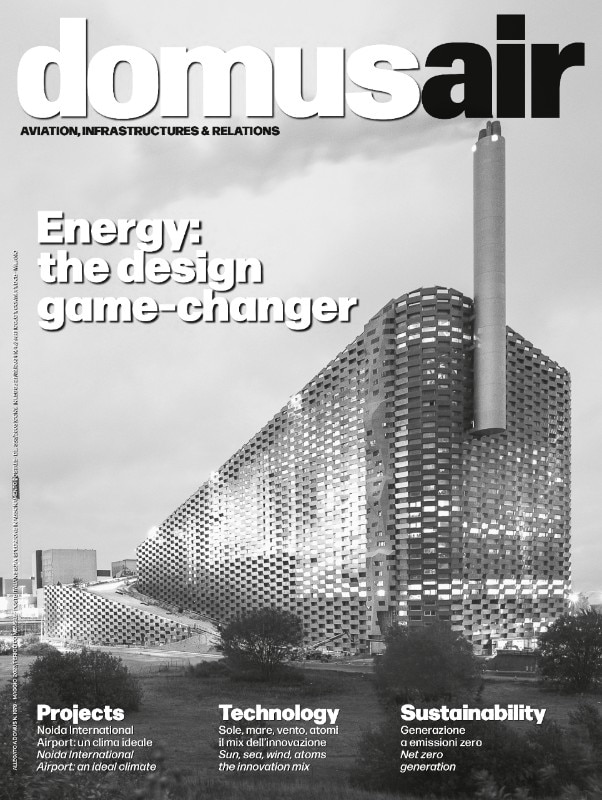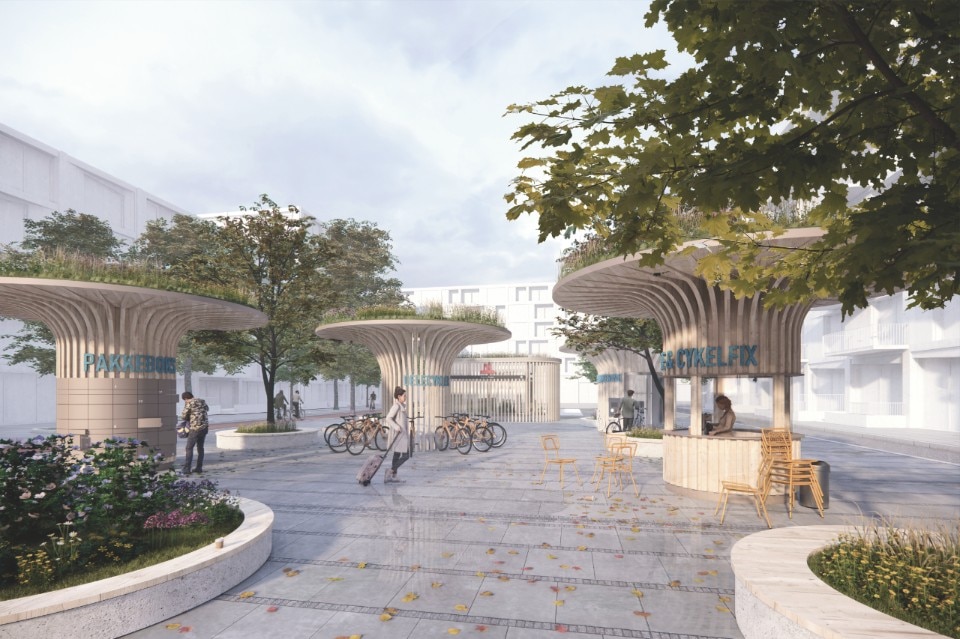A resource-efficient and “climate-friendly” metro station requires a more thorough and holistic approach to responsible design and construction. Our proposal for a future-proof architectural metro station concept operates in and through three levels: Materials, Mobility Hub, and Climate Campaign. Therefore we do not only intend to focus on reducing CO2 emissions during construction by using biomaterials, but we also set out to connect the metro to the overall mobility strategy and engage the thousands of daily passengers by educating them about the planet’s limited resources and their role in managing them responsibly.
The metro is being built largely underground, resulting in a massive carbon footprint with the excavation and removal of large amounts of soil, heavy concrete, and steel structures. Seen in this light, the CO2 impact of the outer 10 centimetres of cladding is a drop in the ocean. Therefore,instead of making up the stations with a “green” layer, we propose a consistent material optimisation. In our proposal, we apply the “3Rs” methodology, based on the sustainability parameters of “Reduce, Reuse, Recycle”.
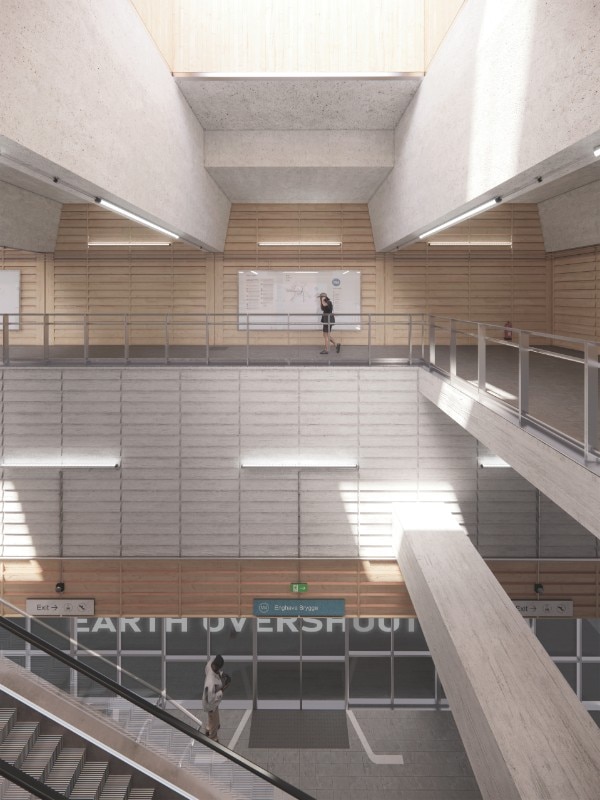
The Reduce parameter addresses material volume and mass reduction. Currently, the material dimension of the metro corresponds to an aesthetic approach with all load-bearing structures and technical installations hidden behind clean, neat, and smooth surfaces. This results in excess mass and material consumption. We believe that this aesthetic paradigm should be rethought and we propose to expose as much as possible of the load-bearing structures, avoiding unnecessary double layers, and to this end we must work with moulds that can, to some extent, withstand a flawed result. In the same spirit, technical installations must remain visible and integrated as ornamentation. Reuse is about the direct reuse of materials in their existing form. A metro station consists of a great quantity of concrete, which emits plenty of CO2. Where the station’s structural concept does not prescribe load-bearing concrete walls, they should therefore be replaced by lightweight walls made of materials that can store CO2 instead. Bio-based products such as HempLime, can replace many of the conventional wall structures, while introducing direct reuse of materials in metro construction paired with a new aesthetic feature.
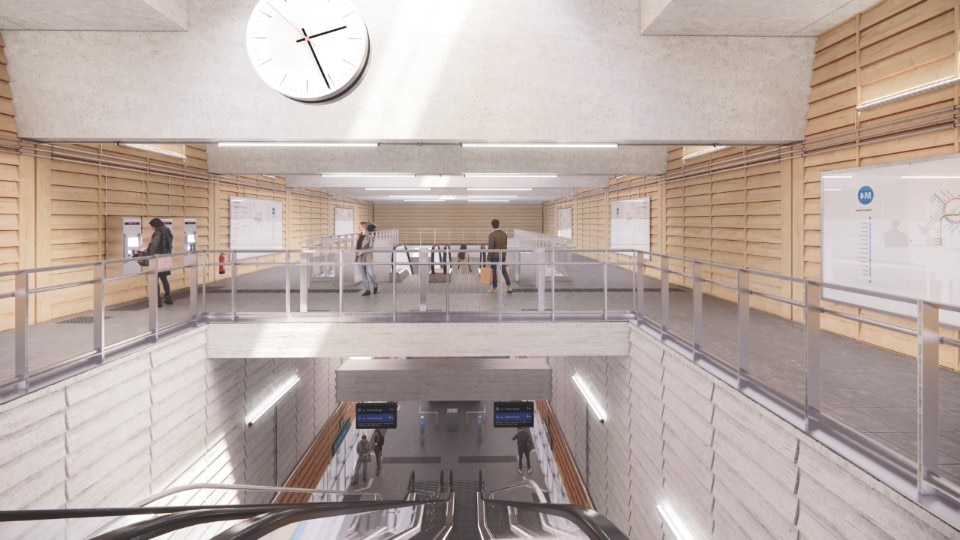
Another option could be to clad the sides and undersides of escalators with panels from cut-up, end-of-life trapezoidal beams. This strategy also includes the use of waste material, such as recycled plastic sheets for signs and benches. We propose also floor tiles produced from Biomason, a bio-cement grown with the help of micro-organisms.
The development of the Copenhagen Metro has been and continues to be a valuable improvement to the city’s public transport system. It is a first step and a prerequisite for the green transition of the transport sector in Copenhagen. But it cannot stand alone, because it cannot – by its very nature – take people from door to door. And only when it will be faster, easier, and more convenient to use public transport than private cars for the entire journey that we will have reached our goal. A metro station must therefore be seen in a wider perspective, as a mobility hub. As a updated version of the historic Copenhagen telephone booths, the M-pavilions could contribute to this with facilities that help solve the “first mile/last mile” problem. The lateral rooms in the station shaft would be ideal for accommodating a number of services that are particularly space-consuming, such as a safe bicycle parking and repair area, bicycle and electric scooters sharing, and a pick-up parcel station.
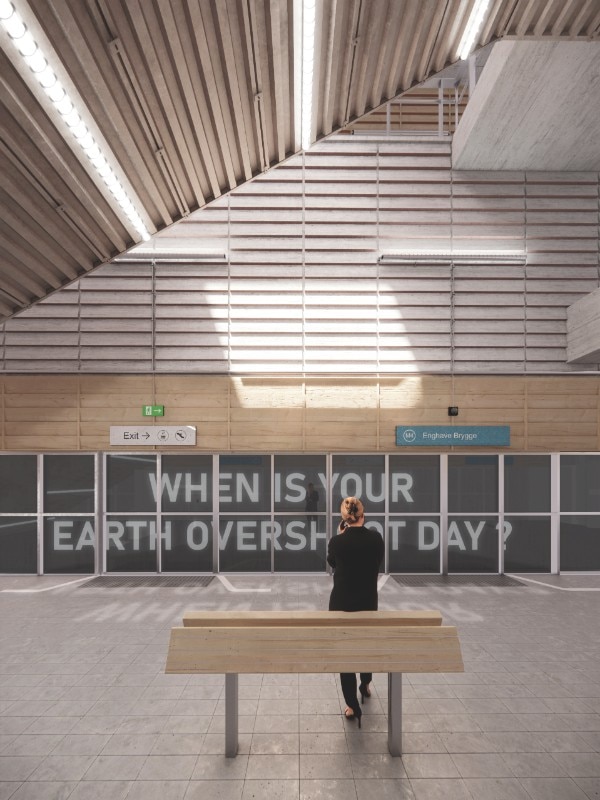
About 29,000 passengers use Enghave Brygge Station daily and let’s assume that there are 14,500 commuters travelling back and forth every day. The metro and its climate potential therefore go far beyond the CO2 savings achieved through focusing only on material consumption. Through campaigns and/or visual communication, the metro may contribute to public education and climate action among passengers who are likely to be particularly receptive to these messages. This could be done through initiatives such as:
- M-Klimabiograf: a projection of text on tunnel walls that, during the two minutes between departures, focus on the passengers’ knowledge, conscience, and options for action regarding the climate crisis. The texts could be something along the lines of “When did you use up your share of the planet’s resources this year?” or “How much CO2 have you saved by taking the metro instead of travelling by car?” and so forth.
- M-Klimabillboard: large billboards at ground level and on the way down the escalators with information about the metro’s climate campaign as well as advertisements of climate-friendly products and initiatives or other important public information such as that required during the pandemic.
- M-Klima-app: an app to follow up on the messages of the M-Klimabiograf and M-Klimabillboard with background information, interactive games, individual calculations, and surveys. A successful climate campaign needs to provide easy-to-understand information, while being concrete enough to translate into actions and behavioural changes.
JAJA Architects’ proposal won the idea competition for “future climate-friendly CPH metro stations” held by Metroselskabet.
